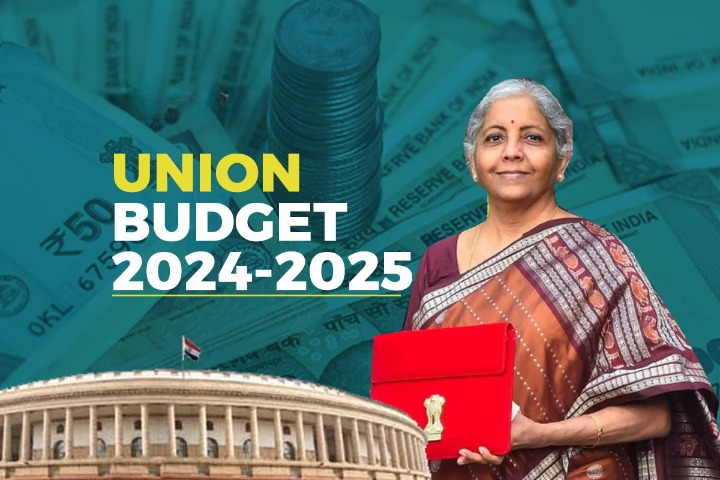Finance Minister Nirmala Sitharaman unveiled the Agriculture Budget 2024-2025 with a clear focus on transforming the agricultural landscape of India. Agriculture is the most important sector in a developing and one of the most populated country like India and in regard with this it’s become important to get an idea on what new initiatives has been there from the government side to boost this sector. This year Nirmala Sitharaman have made a provision of ` 1.52 lakh crore for agriculture and allied sector. This year budget has been allocated to different sectors in agriculture like agriculture research, focusing more on releasing the new varieties which provide more support to the farmers, promoting natural farming in India, achieving self-sufficiency in oilseed crops, better vegetable production and supply chain for the perishable items, building Digital Public Infrastructure, shrimp production, and National cooperation and Rural Economy.
The proposed initiatives reflect a strong commitment to enhancing productivity, promoting resilience against climate change, and driving sustainable growth across the sector.
-
Transforming Agricultural Research
One of the key highlights of this years budget is the emphasis on transforming agricultural research. The government has announced a comprehensive review of the current research set up to shift the focus toward raising productivity and developing climate-resilient varieties. To achieve this, funding will be provided in a challenge mode, encouraging participation from both the public and private sectors. The research will be overseen by domain experts, ensuring that the outcomes are innovative and impactful.
-
Release of New Varieties
As part of the drive to enhance agricultural productivity and resilience, the government will release 109 high-yielding and climate-resilient varieties of 32 field and horticulture crops for cultivation. These new varieties are expected to play a crucial role in helping farmers cope with changing climatic conditions and improving overall crop yields.
-
Promoting Natural Farming
The budget also places significant emphasis on natural farming. Over the next two years, one crore farmers across the country will be initiated into natural farming practices, supported by certification and branding initiatives. The implementation of this initiative will be carried out through scientific institutions and willing gram panchayats, with the establishment of 10,000 need-based bio-input resource centers to support the transition.
-
Missions for Pulses and Oilseeds
To achieve self-sufficiency in pulses and oilseeds, the government will strengthen their production, storage, and marketing. The strategy, first announced in the interim budget, aims to achieve ‘Atmanirbharta’ (self-reliance) in oilseeds such as mustard, groundnut, sesame, soybean, and sunflower. This initiative is crucial in reducing the country’s dependence on imports and ensuring food security.
-
Vegetable Production & Supply Chains
In a bid to bolster vegetable production, large-scale clusters will be developed closer to major consumption centers. The government will promote Farmer-Producer Organizations (FPOs), cooperatives, and startups to strengthen vegetable supply chains, including collection, storage, and marketing. This approach is expected to reduce wastage, enhance supply chain efficiency, and increase farmers’ incomes.
-
Digital Public Infrastructure for Agriculture
Building on the success of previous initiatives, the government plans to implement Digital Public Infrastructure (DPI) in agriculture across the country within three years. This initiative aims to cover farmers and their lands across the country within the next three years. In the upcoming year, a digital crop survey for Kharif will be conducted using DPI in 400 districts, bringing the details of 6 crore farmers and their lands into farmer and land registries. Furthermore, the issuance of Jan Samarth-based Kisan Credit Cards will be enabled in five states, providing farmers with easier access to credit and financial services.
-
Boosting Shrimp Production and Export
Recognizing the potential of the aquaculture sector, the budget provides financial support for setting up a network of Nucleus Breeding Centres for Shrimp Broodstocks. This initiative will be supported by NABARD, which will facilitate financing for shrimp farming, processing, and export. By boosting shrimp production and exports, the government aims to tap into the growing global demand for seafood, providing farmers with new opportunities for income generation.
-
National Cooperation Policy and Rural Economy
The government will introduce a National Cooperation Policy aimed at the systematic, orderly, and all-round development of the cooperative sector. This policy will focus on fast-tracking the growth of the rural economy and generating employment opportunities on a large scale. By fostering cooperation among farmers and rural communities, the government aims to build a more resilient and self-sufficient agricultural sector.
To support these initiatives, the government has made a substantial provision of ₹1.52 lakh crore for the agriculture and allied sectors. This allocation underscores the governments commitment to revitalizing Indian agriculture ensuring that farmers have access to the resources, technologies and support they need to thrive in an increasingly challenging environment.
In conclusion, the Agriculture Budget 2024-2025 represents a comprehensive and forward-looking plan to transform Indian agriculture. By focusing on productivity, resilience, and innovation, the government aims to empower farmers, enhance food security, and drive sustainable growth in the agricultural sector.

